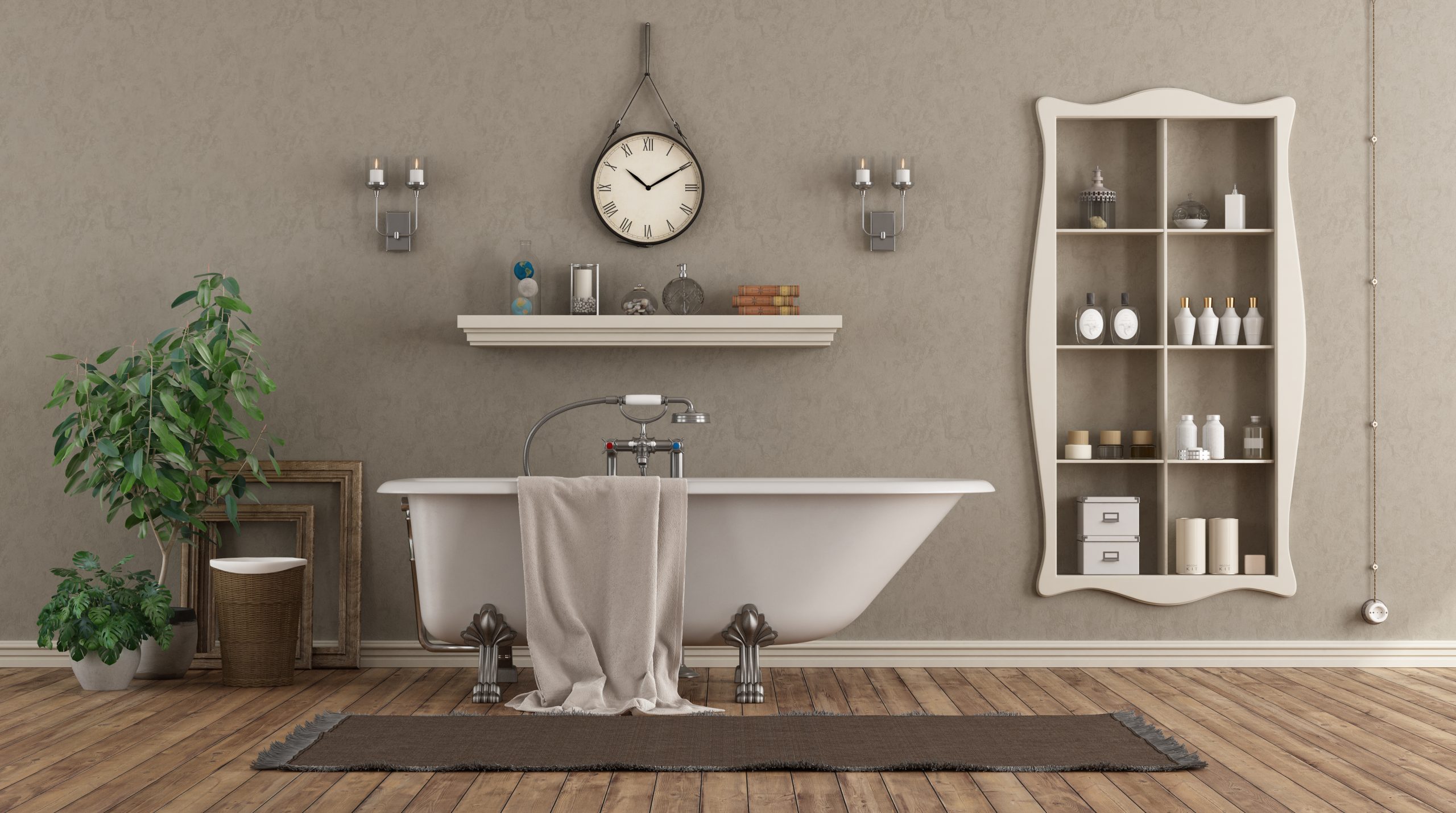Photo by archideaphoto on Envato
Documented early plumbing systems for bathing go back as far as around 3300 BC with the discovery of copper water pipes beneath a palace in ancient Europe. Evidence of the earliest surviving personal-sized bathtub was found on the Isle of Crete where a 1.5-meter (5 ft) long pedestal tub was found built from hardened pottery.
The clawfoot tub, which reached the apex of its popularity in the late 19th century, had its origins in the mid 18th century, when the ball and claw design originated in the Netherlands, possibly artistically inspired by the Chinese motif of a dragon holding a precious stone. The design spread to England, where it found much popularity among the aristocracy, just as bathing was becoming increasingly fashionable. Early bathtubs in England tended to be made of cast iron, or even tin and copper with a face of paint applied that tended to peel with time.
The Scottish-born inventor David Buick invented a process for bonding porcelain enamel to cast the iron in the 1880s while working for the Alexander Manufacturing Company in Detroit. The company, as well as others including Kohler Company and J. L. Mott Iron Works, began successfully marketing porcelain-enameled cast-iron bathtubs, a process that remains broadly the same to this day. Far from the ornate feet and luxury most associated with clawfoot tubs, an early Kohler example was advertised as a “horse trough/hog scalder, when furnished with four legs will serve as a bathtub.” The item’s use as a hog scalder was considered a more important marketing point than its ability to function as a bathtub.
In the latter half of the 20th century, the once-popular clawfoot tub morphed into a built-in tub with a small apron front. This enclosed style afforded easier maintenance and, with the emergence of colored sanitary ware, more design options for the homeowner. The Crane Company introduced colored bathroom fixtures to the United States market in 1928, and slowly this influx of design options and easier cleaning and care led to the near demise of clawfoot-style tubs.
In the 1960s fiberglass bathtubs became the standard for homes, being lightweight and inexpensive.
James R. Wheeler and his brother Richard in 1979 adapted the acrylic being used for outdoor spas to make acrylic bathtubs. Working with Spartech Plastics, they developed the modern co-extruded and durable acrylic bathtub. The company American Bath Factory was the first to expand the diversity of acrylic bathtubs to include whirlpools, clawfoot bathtubs, and a large variety of pedestal and modern bathtubs.
For more information about how to refinish your old cast iron bathtub, give us a call today!
Just contact us.
We are Houston Bathtub Refinishers.


